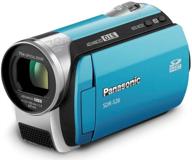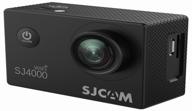
Review on FeiyuTech G6 Plus Electric Stabilizer by Micha Zikowski ᠌

Best price for this product, will buy more!
First of all, here is my demo video with and without stabilizer videos: I am extremely pleased with this stabilizer, it works well, it makes it possible to stabilize such cameras: a) Sony A6300 + E16-50PZ + Rode Videomic Go; b) Sony A6300 + FE28/2 + Rode Videomic Go; c) Sony A7III + E16-50PZ. All of them weigh less than 800 grams, which does not exceed the passport maximum load. However, with a lens longer than 6-8 cm, the camera may no longer be able to balance. The shifted rear hinge iscomnvenient because it does not close the screen. The balancing process takes acomuple of minutes, but if thecomnfiguration does not change, then after removing the camera (together with the mounting platform), it will subsequently have to be balanced only along one axis, whichcomes out quickly. True, the regular case requires you to reset all the balancing in order for the stabilizer to fit in it, so I don’t use it. To use the full range of tilt angles, the camera must be as low as the Sony A6xxx (and without an external microphone), otherwise it will hit the frame when the handle is horizontal. The ability to put the stabilizer on a tripod is useful, including for remotecomntrol of rotation from the phone. It is also good to shoot if you put the stabilizer on a monopod, the camera seems to be on a tripod, while maintaining mobility, and in general it does not attract attention as much. It is better to buy a tripod forcomnvenience (I have Zhiyun TRM02). She can work as an elongated handle. By the way, itcomes with a phone holder. The stabilizer supports slow turning along a given route for shooting time-lapses, but this function is implemented crookedly. More work examples: 1. In the village Pazik: ? v=kxPgFlXyNKU 2. When walking: ? v=66eDrzL3enI 3. Broadcast from a phone with remotecomntrol: ? v=C_ZXqKnlPFc
- — One of the lightest and most compact stabilizers designed for mirrorless cameras. At maximum, it can hold a camera like Sony A6xxx with a 200-gram lens and a small external microphone, or Sony A7x with a 100-gram lens. (In general, larger gimbals with heavier cameras are physically very hard to hold with one hand. ) - Works! Videos taken on the move can be viewed. - The hinge shifted down practically does not interfere with the use of the screen, which is extremely convenient (see photo, the folded screen does not touch the stabilizer). - The stabilizer allows remote control of some cameras via Wi-Fi (in particular, Sony A6300, 6500). But don't count too much on the zoom control on the Sony 16-50PZ, it twitches terribly (seen in video #2). - It is possible to remotely control the stabilizer itself via Bluetooth. By installing a phone on the stub, you can broadcast videos to YouTube from your phone via a CamON (on the phone) and VLC + Feiyu ON (on the tablet) link, while steering the stub from the tablet (see picture) while at the other end of the room. Checked it works great. - Three modes of "sharpness" of the stabilizer, you can quickly change from your phone. - Very good battery life (standard 26650, 1 piece). - Phone mount and action camera adapter included. - Platform for the Arca standard camera, allows you to quickly put the camera on the stub and start by adjusting only one shift axis (20 seconds).
- - Curve implementation of the time-lapse shooting function. Just a curve, you should not count on it until newer firmware is released. - In some cases, when switching modes or when going beyond the range of normal operation, the stabilizer jerks sharply. It's also a firmware issue. - The control knob is very convenient, but it does not remember its mode of operation (camera / stub; roll / turn / tilt) when turned off, which is annoying. I usually use it to adjust the tilt, and every time I turn it on it is suggested to use it for roll, and if a camera is connected, for zoom. — Limited range of tilt angles. Namely, 260° with a low camera like the Sony A6xxx - you can't shoot with the handle held vertically up. With taller cameras closer to 180°: do not shoot with the handle horizontal (see photo). In general, this is not such a disadvantage, given the small weight and size of the stabilizer. — Useless carrying case. Putting the stabilizer in this case, you will then have to re-configure all the axes. - There is no tripod included, which makes balancing a little more difficult, and in general the tripod is very useful as a handle for the second hand, etc.












